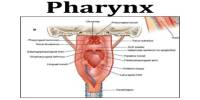Understanding the intrinsic functions of preserving homeostasis and viability in response to environmental influences is crucial when understanding a bacterial population as a multicellular community.
Cannibalism is a coping mechanism to deal with environmental nutritional deficiency, which preserves the Bacillus population’s survival. The mechanism of cannibalism in other Bacillus species is still unknown, despite extensive research on it in the model Bacillus species, Bacillus subtilis.
Bacillus velezensis SQR9 is a well-studied beneficial rhizobacterium that can colonize plant roots efficiently through biofilm formation. The strain SQR9 harbors a novel genomic island 3 (GI3), which encodes synthetases (BnaD-Y) of the novel branch-chain fatty acids, bacillunoic acids; an ABC transporter (BnaAB) to export toxic bacillunoic acids; a response regulator (OmpR) and a histidine kinase (OmpS).
By constructing the genetic mutant that does not synthesize bacillunoic acids (SQR9ΔbnaV, the beta-ketoacyl synthase deletion mutant) or is deficient in self-immunity against bacillunoic acids (SQR9ΔbnaA, the ATPase gene deletion mutant), the authors found that in terms of biofilm density, dead cell proportion in the biofilm, and extracellular DNA in the biofilm, SQR9ΔbnaA was significantly higher than the wild-type, and SQR9ΔbnaV was significantly lower than the wild-type, indicating that bacillunoic acids mediate cell lysis (cannibalism) and eDNA release in a subpopulation of cells, which promote biofilm formation.
By fusing the promoter region of the bnaAB operon with the gfp reporter gene, they found that bacillunoic acids can induce the expression of the immunity gene bnaA.
Additionally, it was found that the strain SQR9 population was divided into cells that produced bacillunoic acids and cells that did not, with the producers being resistant to the toxins while the nonproducers were sensitive to them. Thus, cannibalism is involved in cell differentiation of strain SQR9 population.
The authors concentrated on the response regulator gene ompR and the histidine kinase gene ompS, which are close to the immunity genes bnaAB, in order to understand the mechanism of cannibalism. They demonstrated that bacillunoic acids regulate the expression of the bnaAB operon via phosphorylation of OmpR in TCS (OmpS/OmpR).
Thus, a subpopulation of cells within the biofilm differentiate into cannibals and secrete toxic bacillunoic acids. Upon activation by bacillunoic acids, the response regulator OmpR of the TCS (OmpS/OmpR) activates transcription of the ABC transporter BnaAB, which pumps bacillunoic acids out of the cell for self-protection. Toxins that are exported may lyse their nonproductive siblings that lack this self-immunity, releasing eDNA to encourage the production of biofilms.
In summary, the authors report that bacillunoic acids-mediated cannibalism enhanced biofilm formation of B. velezensis SQR9. It’s interesting to note that this is the first account of a Bacillus strain acquiring the full complement of components necessary for cannibalization via horizontal gene transfer.
Cells used in cannibalism, which are sacrificed for the benefit of the entire population, are killed by bacillunoic acids. B. velezensis SQR9 population gains an evolutionary benefit from this precision system.
















